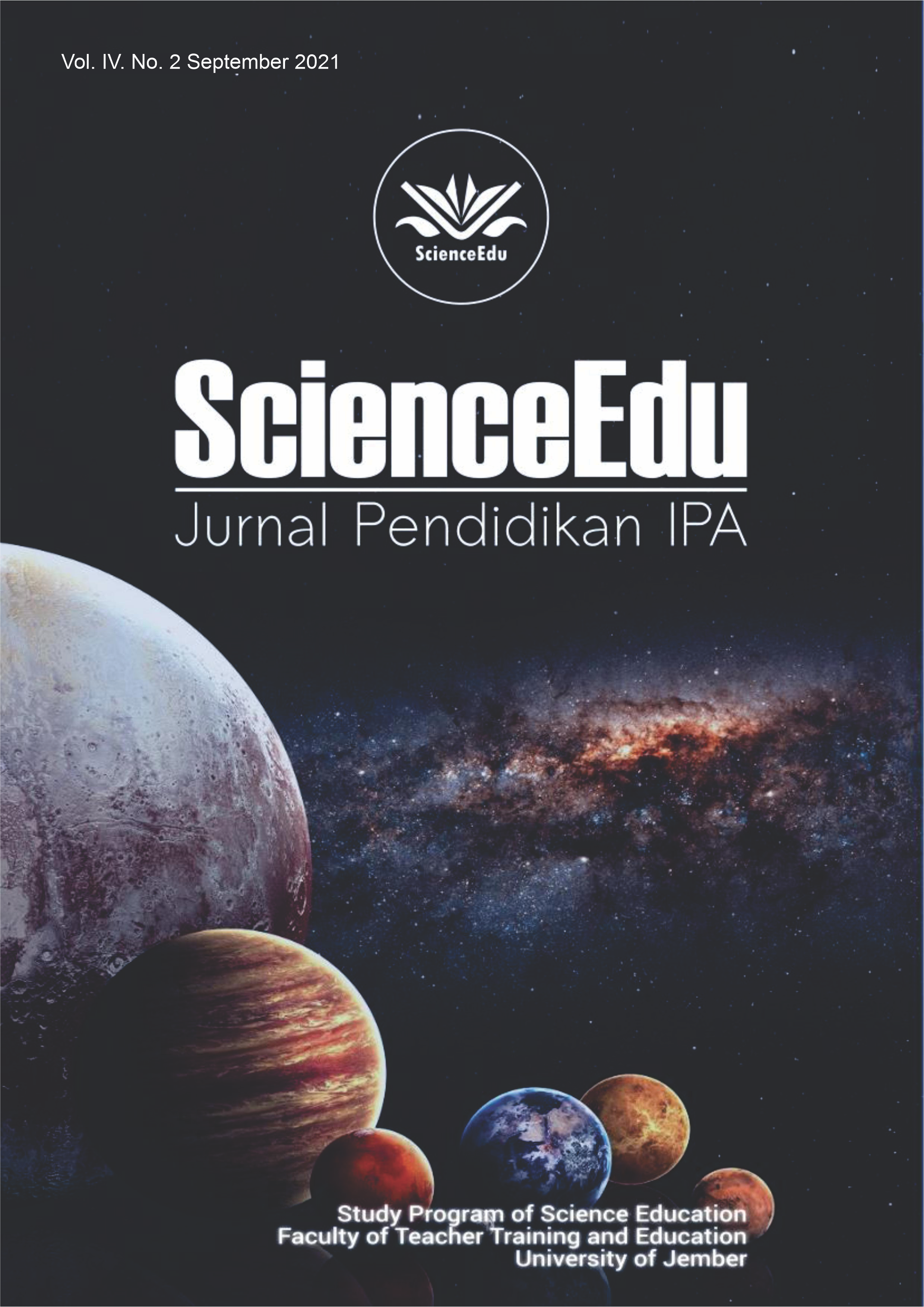ANALYSIS OF LEARNING OUTCOMES AND ERROR IDENTIFICATION IN TEMPERATURE AND HEAT COGNITIVE TES
DOI:
https://doi.org/10.19184/se.v4i2.24386Keywords:
Cognitive ability, Identification of student error factors, Learning outcomesAbstract
Cognitive ability is the student's mastery of the cognitive realm. This study aimed to determine student learning outcomes and what factors caused student errors in solving cognitive test questions on temperature and heat material. The type of research is descriptive quantitative research. The population in this study were students in class XI IPA at SMA Negeri 2 Bontang, amounting to 3 classes with a total sample size of 30 students in class XI IPA 1 and 30 students in class XI IPA 2. Data collection was used to test techniques in the form of 10 essay questions to determine learning outcomes. The results showed that student learning outcomes in solving cognitive test questions on temperature and heat material at the creating level (C6) were categorized as lacking because only 30%, at the level of evaluating (C5) and analyzing (C4) 56% and 66% respectively. The cognitive abilities of students at the level of remembering (C1) and understanding (C2) have shown very well because the percentage obtained is relatively high, namely remembering (C1) by 97% and understanding (C2) by 84%. Moreover, students' cognitive abilities at the level of applying (C3) were good because the percentage obtained was 81%. Students' most common error factors when solving cognitive test questions in terms of temperature and heat were misconceptions, strategy errors, errors in using data, and calculation errors. Error factors that often appear, especially in concept errors, need to get more attention to support students' learning physics.
Downloads
References
Hastuti, I., Toro, S., & Rahardjo, D. T. (2012). Deep Error Analysis Solve The Subject Matter of Heat in Class X High School Students. Material Journal And Physics Learning , 2 (7), 1–11.
Ikhwanuddin, I. (2010). Problem Solving in Learning Physics to Increase Ability Analytical Thinking Students. Journal Education: Innovation Research Learning, 40(2), 215–230.
Kompas.com (2019). Read Literacy Indonesia is Low, Access to Reading is Suspected So Cause. https://amp.kompas.com/edukasi/read/2019/06/23/07015701/literasi-baca-indonesia-rendah-akses-baca-diduga-jadi-penyebab (accessed October 28 2020)
Maharta, N. (2003). Analysis Misconception of High School Physics in Bandar Lampung. Thesis. Lampung: FKIP Univ. Lampung, 40(2), 18–32.
Nurjamilah, N., Sulaeman, N. F., & Komariyah, L. (2017). Use Ordered Multiple Choice Instrument (OMC) To Assess Understanding Business and Energy Concepts with Learning Model Discovery In SMAN 1 Long Kali. Periodic Scientific Physics Education, 5(3), 241.
OECD. (2019). PISA 2018 Assessment and Analytical Framework. In OECD Publishing.
Setiadi, D. (2014). Learning model Based on the Improvement of Science and Literacy Its implementation in the curriculum Science SMP 2013. Pijar Mipa Journal, 9(1).
Sulaeman, N. F., & Nuryadin, A. (2018). Development of Diagnostic Instruments
Online Based on Multiple Orders Choice in Business Materials and Energy For High School Students. Vidya Karya, 32(2), 148.
Sutrisno, W. (2009). Attitude Growth Positive Attitude through Learning Physics. Journal of Teaching Physics Middle School, 1(1), 14–17.



